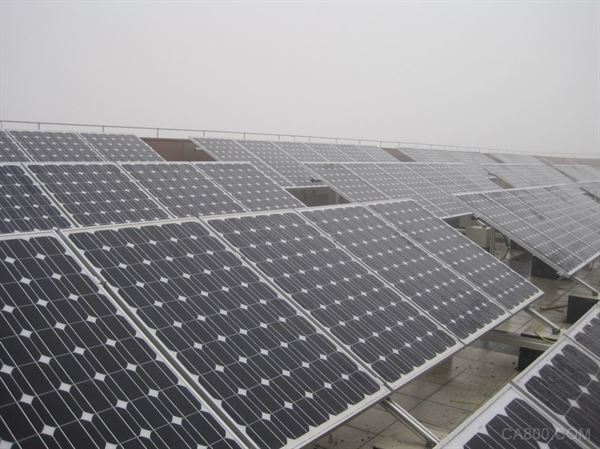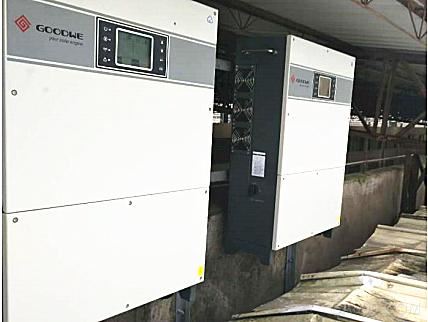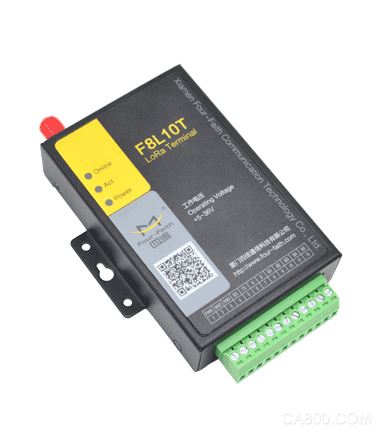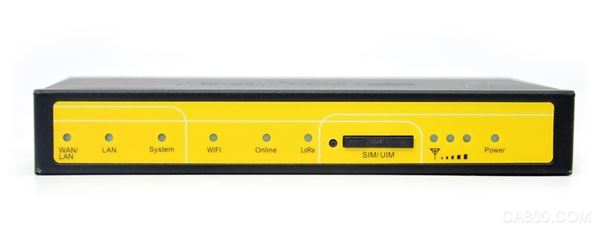Solar (also called photovoltaic) power stations are made up of sheets of photovoltaic cells. The stability and output power of the PV power plant work with the PV array, and even with the working status of each PV panel. How to monitor and diagnose the huge PV arrays is the primary issue in maintaining the normal operation of PV power plants. At present, the main problem of photovoltaic arrays is the hot spot phenomenon; the so-called hot spot phenomenon is that some of the photovoltaic cells in photovoltaic panels are blocked for a long time, resulting in a smaller current than other non-blocked photovoltaic cells. Current, according to Kirchhoff's voltage law, these occluded photovoltaic cells will have a negative voltage, become a load in the circuit, and in the form of heat consume the power generated by other normal operating photovoltaic cells, this kind of heat Accumulation over a long period of time can damage the encapsulating material of the photovoltaic panels, or even destroy the physical structure of the photovoltaic panels, and will cause permanent damage.

Current monitoring methods for photovoltaic arrays mainly include the following two methods:
1. Direct method: Directly measure the voltage and current of each panel and use bus technology to send the data to the computer for judgment. This method involves a series of problems related to the transmission path such as planned wiring, preset interfaces, line detection, and line expansion.
2. Indirect method: Determine the working status of the battery by measuring the temperature difference of the battery. However, there are some defects in this method, such as the inability to distinguish between the state of the temperature is not obvious, the real-time performance is poor, the accuracy and efficiency of the fault detection depends on the level of the detection equipment (infrared thermal imager), it is not easy to implement online fault analysis and alarm and so on.
Comparing the above two monitoring methods, using the LoRa wireless star network to monitor the PV array has unparalleled advantages. Wireless sensor networks transmit data to three-dimensional space, eliminating the need for conductive media in the middle, saving manpower and maintenance costs. The network is self-organizing and fault-tolerant and easy to redeploy. The monitoring data is undisturbed and the data obtained is original and accurate, which is conducive to scientific research and subsequent improvement and optimization of the system.

system requirement:
1. Through the combination of LoRa wireless terminal F8L10T and LoRa gateway F8926-L/LoRa F8L10GW base station, the operating status, current, voltage, rated power and other parameter information of each panel of the PV array are transmitted to the operator network. Management background, real-time monitoring and analysis processing;
2. Ability to monitor PV array status information, temperature and humidity sensors, etc. in the local control room. These data can be used for Lan port local reception, WiFi local reception and RS232/485 serial port local reception.
3. The management staff can also monitor the corresponding key parameters of the PV array through the APP through the mobile phone at anytime and anywhere.
System topology:

solution:
The entire system architecture is divided into three layers: acquisition terminal layer, data transmission layer, and application management layer. The acquisition terminal layer functions as an executor and is responsible for receiving and collecting voltage and current data. The data transmission layer functions as an agent and is responsible for integrating the data uploaded by the acquisition layer and sending it to the application management layer. The application management layer mainly manages the monitoring platform. The role of the decision maker is responsible for the analysis and judgment of data and the management and maintenance of the system, realizing remote real-time monitoring and early warning.
1. The normal operation of the entire system of the PV array acquisition terminal layer equipment requires real-time monitoring of the operating status of multiple parameters. The acquisition terminal layer equipment is used to implement parameter collection of each monitoring node. For example: photovoltaic module voltage and current sampling module (responsible for sampling The voltage and current values ​​of PV modules determine whether the PV modules are faulty; sensors such as temperature, humidity, and light (responsible for sampling environmental data, provide data support for system optimization and PV module adjustment). The data collected by the acquisition terminal device is sent to the four-channel LoRa wireless terminal F8L10T through the RS232/485 serial port. Of course, the four-channel LoRa wireless terminal F8L10T can directly acquire the analog data of the system.

2. LoRa data transmission equipment
The LoRa data transmission layer uses four-letter F8L10T terminal and LoRa gateway F8926-L/LoRa base station F8L10GW. It is used to establish the data transmission channel throughout the system, when the LoRa device receives data from the acquisition terminal layer or through the LoRa terminal. After the data is transmitted to the application management layer through the self-constructed wireless network transmission, at the same time, the application management layer can also issue control instructions to each monitoring node through the LoRa network, so as to achieve two-way data communication to achieve telemetry, remote control, and remote sensing purposes. .
3. The application management management layer mainly manages the M2M cloud management and monitoring platform. The management and monitoring platform is mainly composed of server units and platform software. After the management and monitoring platform receives the data from the transmission layer, it performs various analysis on the data and performs various control operations based on the analysis results, such as issuing alarm information and issuing control instructions to the terminal monitoring device.

Program advantages:
1. LoRa wireless terminal has high receiving sensitivity
Its receiving sensitivity is up to -140dBm, and its link budget is 160dBm, which is the industry leading level. It can penetrate several walls and has strong diffraction ability.
2. Communication is stable and reliable
Industrial-grade wireless terminal built-in watchdog to ensure long-term stable operation of the system; using LoRa modulation and demodulation technology from the military tactical communication system, strong anti-interference ability; which LoRa + full Netcom gateway with disconnected self-test, automatic recovery, to ensure Permanent online.
3. High-precision data
The terminal adopts efficient cyclic interleaving FEC forward error correction coding, maximum error correction 64 bit, double 256 ring FIFO, ensuring high-precision data transmission.
4. Adjustable power
The terminal can flexibly adjust the power level to adapt to the distance and rate requirements during data transmission.
5. Strong environmental adaptability
High temperature resistant, designed for the wild unattended environment.
B85 8-card mainboard, 8-card in-line motherboard platform (B85 8-card 1820U independent U+ new chassis 4 strong 5300 RPM fan /4 silent 3000 RPM optional +4G memory +128G solid state +2000W new power supply) compatible with all types of graphics cards in the market, stable performance, reasonable heat dissipation.
X79 Gpu Mining Case
Chassis weight: 4.5kg
Weight of chassis with fan: 5.5kg
Size:500*400*180mm
Multi graphics card case custom case
Motherboard bit: compatible with standard ATX motherboard
Hard disk bit: a 3.5-inch hard disk or a 2.5-inch hard disk
Power bit: ATX power installation size
Standard fan: 4 sets of 12038 fans,
Graphics card bit: supports up to 5 330mm long graphics cards
Chassis material: 1.0 mm cold plate full baking paint to prevent rust, anti-static effect!
tips: chassis products are bulky, heavy weight, and the express freight is very expensive. Buyers should consider buying them carefully to avoid unnecessary loss caused by return. If you don't understand, please communicate with customer service.
The fan of the product is double ball fan, 5300 RPM new violent fan, with noise of 65dB
B85 Gpu Case,B75 gpu case,gpu mining case,gpu case,GPU Server Case
Shenzhen YLHM Technology Co., Ltd. , https://www.asicminer-ylhm.com